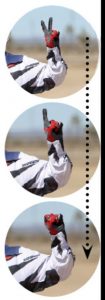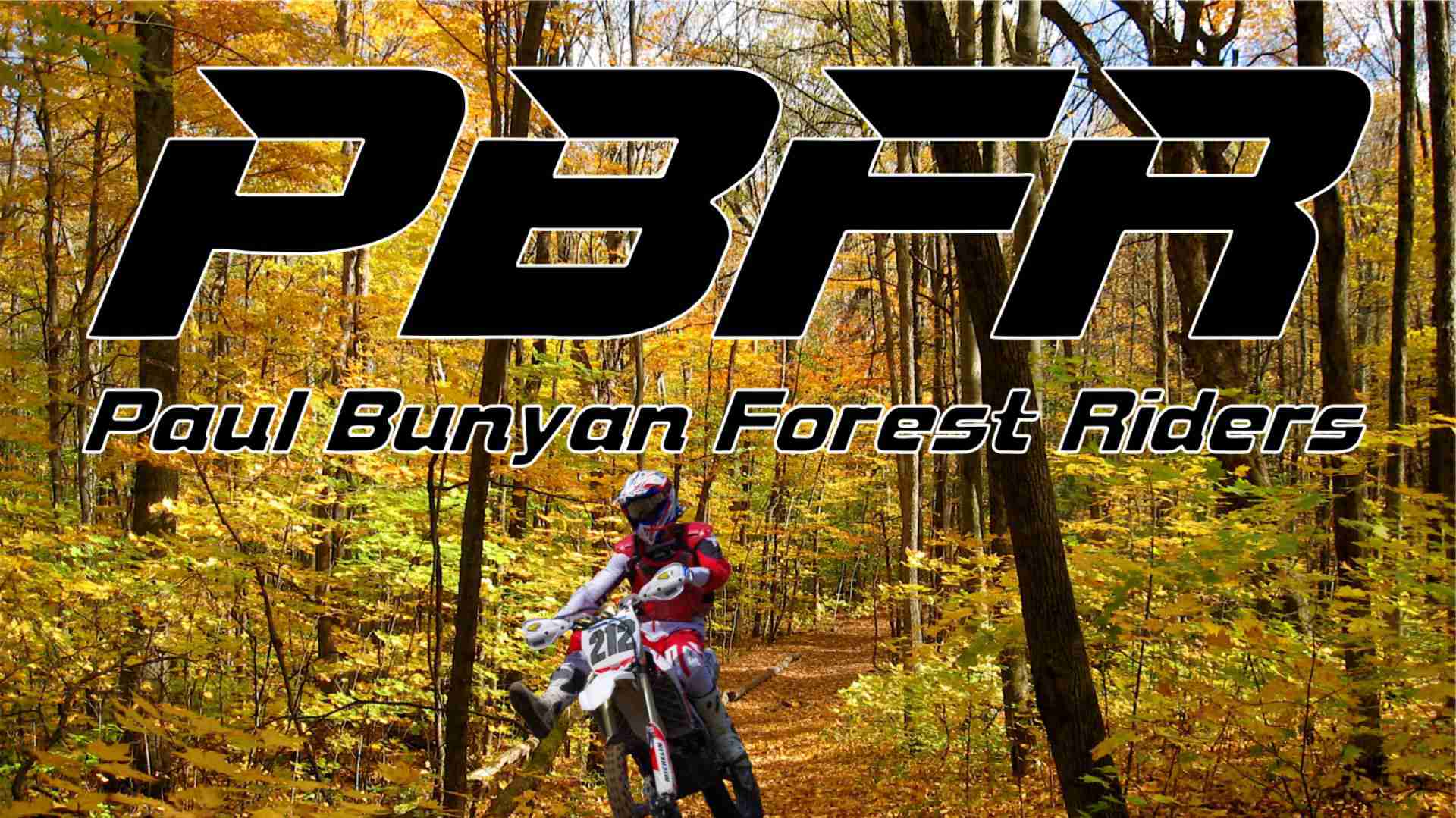OHM (Off Highway Motorcycle) Trail Etiquette
A major part of OHM (Off Highway Motorcycle) trail etiquette falls under the category of good manners. For instance, if you come up behind an unknown rider who’s slower than you, be courteous. Rev your engine a bit to let him/her know you’re there, then back off and give him/her a little room. Then try to have some patience while he/she finds a place to pull over and let you by. On single track or in technical terrain it might take a few minutes. While it’s courteous for slow riders not to hold up faster riders, it’s the overtaking rider’s duty to make a clean, safe pass and not buzz or intimidate the slower rider.
Passing etiquette works both ways. Be aware of faster riders coming up behind you. If you hear or see a rider catching up to you or riding close behind you, find a spot with good visibility and relatively flat terrain to slow down, pull over or off the trail, and stop. If the rider is not passing you, wave them by to let them know it’s safe to pass.

Because most OHM trail systems in MN have two-way traffic, there’s always the potential of a head-on collision between riders. When encountering on-coming riders, slow down and make sure there’s room for both of you on the trail. Then with your left hand, hold up the number of fingers that represent the number of riders in your group behind you. This should be done by every rider in both groups, with each successive rider displaying one less digit, right down to the last rider who makes a zero with their hand or simply holds up a fist. This lets everyone know how many people to look out for, and when they can get back on the gas – BRAAAAAP! If there’s more riders in your group than fingers on your hand, hold up 5 fingers. If you meet a group and the first 3 riders hold up 5 fingers, then subsequent riders show 4-3-2-1-0 you will understand.
Let faster riders ahead at trail intersections. If you’re taking a break at a trail intersection and a faster group shows up, wait for them or ask them if they’d like to go ahead of you.
If you have to stop with a group, move off the trail or park single file on the edge of the trail if it’s wide enough.
Yield to riders on steep downhills or uphills.
We do sometimes see equestrians on our MRT trails. Yield to horses by stopping and turning off your engine. It’s safer for the equestrian and gives them a better opinion of “dirt bikers”. Smile and be courteous (being courteous goes for anyone you meet on the trail, including hikers and quads on the fire roads and double-track). It’s also not a bad idea to take your helmet off while horses walk by. Horses don’t always recognize a rider wearing a helmet as a human and can get scared. Oh, you say you don’t care? You might change your mind if the scared horse decides to kick you in self defense…
Stay to the right on double-track or fire roads and don’t cut left turns.
Always stop and offer to help downed riders.
If there is a downed rider around a blind turn, walk to the entrance of the turn and warn approaching riders of the hazard.
Don’t roost other riders or parked cars.
Don’t stop just after a blind turn.
Move fallen or unsafe obstacles off the trail.
Use hand signals when turning off of wide trails to warn riders who may try to pass you as you slow down.
Look behind you before you make a U-turn on a wide trail or road.
Pack out your trash, and any you find at your rest stops, including cigarette butts.
When trail riding, if you must use tear-offs, don’t just drop them like when you’re racing. Pack them out.
Don’t mix drugs/alcohol and riding.
Always be conscious of sound, repack your muffler before it gets loud.
If you come up behind a group of very slow riders, and the sweeper is not letting you pass even though he clearly indicated that he has noticed you, then don’t force it. Stay back for a while. Possibly the reason the sweeper is blocking the trail is because he knows passing would be unsafe for the beginners in front of him. This happens when someone is sweeping for little kids, or other very inexperienced riders who can’t handle getting passed yet. And don’t assume first time riders are little kids; the inexperienced rider might be full-grown and on a full-size bike. Similarly, if you come up on a rider who is parked across the trail trying to block it, don’t pass just him. He may be the sweeper for a group with a downed rider around the corner.
Obviously, there is a flip side to the above rule: If you’re sweeping for a slow group that doesn’t want to be passed (or someone has fallen), make sure to allow passing by having the whole group pull over to the side, or by using the next possible turnout, and get your slow riders off the trail as quickly as possible. We expect other riders to have some patience with beginners, and to be willing to hang back for a little while. But we should not abuse that patience, and let the faster riders get through as soon as possible.
OHM Trail Rules
All trail system users must follow MN DNR Off-Highway Vehicle Regulations. (specifically read about OHM on pg. 37-38)
All Trails are bi-directional. Be aware of oncoming traffic.
Ride trails that are legal for OHM. Be aware of what type of trail you are on at all times.
ATV’s may ride in highway ditches where it is marked as so.
OHM’s cannot ride in any highway ditch, unless it is an approved OHM trail.
In an emergency dial 911. It’s a good idea to carry a cell phone in your hydration backpack, even if you keep it turned off until needed. It adds minimum weight and could save a life. Cell coverage is spotty in the forest. If you don’t get through move to an area that is a bit more open and try again. Hubbard County 911 operators have access to MRT trail maps and MN Emergency Trail Locator System information. Use ETLS signage to help emergency responders find your location. Also, most modern cell phones have built in GPS and emergency locator technology. Ask the 911 operator if they have the means to make use of this technology.
Consider donating to the Paul Bunyan Forest Riders![]() The club was incorporated as a 501c3 non-profit in 2007, and is supported by a MN Grant-In-Aid. We appreciate donations to help us purchase club-owned power tools to ease some of the burden of maintaining the trail system.
The club was incorporated as a 501c3 non-profit in 2007, and is supported by a MN Grant-In-Aid. We appreciate donations to help us purchase club-owned power tools to ease some of the burden of maintaining the trail system.
